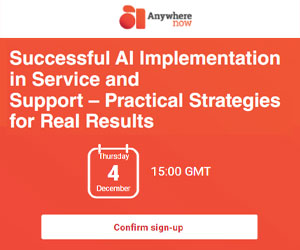Trying to achieve a return on investment in terms of learning objectives is hard enough, but when you don’t have a benchmark to measure from, it makes it nearly impossible.
Yet many organisations set about their learning strategies blindly forging ahead, hoping that if they steer the ship in the right direction, that’s where it will sail.
The problem is that learners are not as reliable as a ship’s steering mechanism, and there is a whole range of factors that contribute to effective learning.
If companies want measurable outcomes, they need to get smarter about how they implement learning programmes and know what tools they have at their disposal to achieve better results.
Start with the end in mind
It all starts with a learning strategy, defining what type of learning needs to be achieved and how it links to specific business outcomes. This is where analytics come in, establishing if this is a true reflection of what is really happening in the organisation, and if these are the right areas to focus on for learning.
Whereas manual listening or manager insights may provide part of the picture, analytics can fill in the blanks and verify what is perceived to be a problem area or if there are other more pressing issues that need to be the focus of learning.
Because analytics can analyse 100% of calls, it creates a more accurate overview of what is happening within the organisation. It can highlight areas previously unknown or give insights into where new business opportunities might exist.
Create a benchmark
Analytics provides data that can be used as a benchmark for learning progress.
For example: In a contact centre, analytics showed that many sales opportunities were being passed up because agents didn’t recognise when the customer was open to being sold to, or they didn’t have the skills needed to close the sale. For every 100 calls, only 20% included sales actions and less than 5% were successfully closed. The company recognised that there was a large amount of potential revenue that they were losing out on.
Without the benchmark created by analytics, they wouldn’t have a starting point from which to develop learning programmes and then track their success and effectiveness in terms of business outcomes. The company recognised that their agents needed specific sales training to close sales more effectively, as well as soft skills training to engage better with customers and develop those sales opportunities.
Target learning
Analytics helps to make learning more targeted to specific areas of business, and this makes it more relevant to learners. It addresses specific challenges they may be facing or knowledge gaps they may have. L&D managers also then have a clear direction on what areas to focus on for developing learning programmes.
Track learning effectiveness
For managers, analytics can help them track the effectiveness of learning programmes to specific business outcomes. Going back to the example of missed sales opportunities in the contact centre example mentioned above: following soft skills training and specific sales training, analytics reported a marked improvement in the number of sales closed.
More specifically, using speech analytics, managers were able to determine which of the agents were applying the skills learnt and which were not. They then knew where to focus their coaching efforts to support the agents and help them gain the confidence needed to be able to close sales more effectively.
Show an ROI for learning efforts
With analytics, it becomes easier to tie learning objectives into outcomes achieved and therefore show the return on investment on learning initiatives. When management can see how the learning budget is being spent and that it is resulting in the transfer of skills, improving productivity and adding to the business bottom line, they will be more open to releasing more funds for learning in the future.
With learning recognised as being at the heart of creating a company culture that is innovative and agile – both necessary attributes to have in an ever-changing marketplace – L&D managers have an opportunity to make a real impact on the company performance.
Supported by analytics, learning professionals can make sure their efforts are specific and relevant so that they result in a return on investment.
Ember Real Results uses analytics extensively, as provided by Ember Analytics division, to create learning programmes customised to their clients’ specific learning needs. Learning programmes typically involve a combination of classroom training sessions and online learning modules to ensure that learning is effective and embedded and it achieves a return on investment for clients.
Author: Guest Author
Published On: 3rd Aug 2018 - Last modified: 7th Aug 2018
Read more about - Archived Content, Ember





























